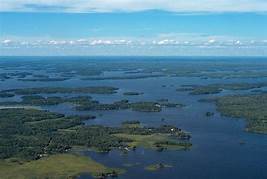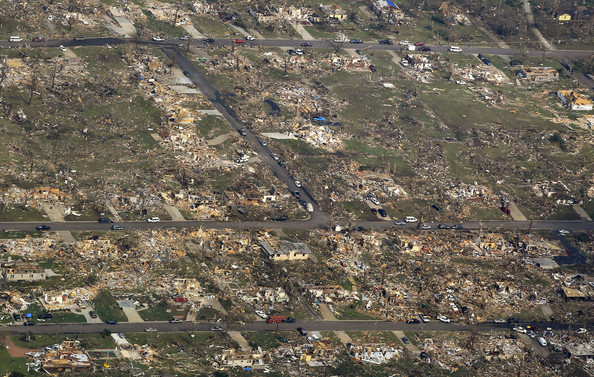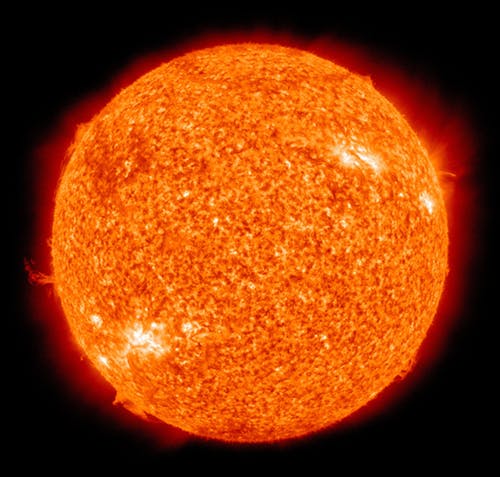
Primary Environmental Phenomena
You are here : Home > Primary Environmental Phenomena
PRIMARY ENVIRONMENTAL PHENOMENA
GRAVITY (EARTH)
I’m a Taurus, born in May and bound to the Earth, so naturally my building process starts in the ground, with Gravity. Frank always said this was the best place to begin. Physics tells us that objects with mass are drawn towards one another by gravitational attraction, one of the four fundamental forces of the universe, and so it is Gravity that holds everything around us in place, anchors us to the ground, and keeps us relatively stable as we spin through the vastness of space. Gravity makes it possible for things to ‘stay put’, which from a builder’s point-of-view is obviously desirable …. when you return home in the evening it would be nice to find your house where you left it in the morning. And thanks to an Earth-mass of 597,000,000,000,000,000,000,000,000 Kg., you can count on it. We tend to forget how powerful this force is because we are constantly immersed in it’s field and have adapted to it’s effects, but it is everywhere all the time and will affect our House forever. Getting oriented in the field, setting the ground ‘layout’, is the first and most important concern for an Architect or an Engineer when starting a new project, both in terms of siting (sitting?) and choosing a Structural System. As a builder, the heavy-lifting required during construction begins with the first ground-breaking and continues every day until the last light-fixture is screwed to the ceiling. Building is endless grunt labor and most of it is necessitated by Gravity.
The idea of stability is fundamental to building a house, both from a structural point-of-view and also from a spiritual perspective. There is a need to be ‘grounded’ and ‘secure’. From the beginning of the design process the plan should shape itself to the local terrain and be bound firmly to it, accepting that this is the condition of rest which nature imposes. Another way to think about stability is to imagine a state of repose, like a cat sleeping on a rock or in a tree, effortless relaxation spread evenly throughout the body while conforming to the landscape nature has provided. Every part of the structure, including the foundation, the soil and the rock beneath it, will bend and compress over time in response to Gravity. If there are any voids in the structure, they will slowly be squeezed down to nothing. Changes to the existing balances of the undisturbed site will result in long-term differential settlements. In engineering terms, all of the Dead Loads and many of the Live Loads used in the Structural Design Calculations are gravity loads, and even our model House will weigh 125,000 pounds or more.
In addition to pure weight, there are several indirect outgrowths of Gravity which also affect the stability of the house, and these will be discussed individually as Geo-Physical phenomena. ‘Earthquakes’ are ground movements caused by circulation of the planet’s magma as it’s density changes due to heating and cooling. This core circulation also affects the planet’s electro-magnetic ‘Radiation’. ‘Settlement’ results from the inexorable downward motion of soil particles to a state of lower potential energy and greater density. Water moving rapidly downhill is the primary cause of ‘Erosion’. ‘Hail’ damage is the result of kinetic energy blasting from the sky. Without the force of Gravity, none of these conditions would exist.
RAIN (WATER)
While Gravity is certainly the most ubiquitous of all the primary elements, Rain is undoubtedly the most troublesome. Moisture condenses in the atmosphere above us and plunges to the ground drenching everything in it’s path, then proceeds to infiltrate every crack and crevice to the point of complete saturation. Water is called the abysmal element because it penetrates steadily downward toward the deepest recesses … into the abyss … and in my experience the most intractable building problems were the direct result of water leaks through the envelope of the house. Swelling, staining, warping, mold, dry-rot, de-lamination, rust, corrosion, electrolysis, short circuits, termites, ants, and general decay are all the direct result of moisture. Poorly ventilated materials which cannot dry-out quickly will prolong and often magnify these problems. High levels of humidity can have long-lasting consequences in terms of air-quality. And even Rain that doesn’t actually penetrate our barrier can have an abrasive effect on the surfaces it strikes, and over time will wear down most substances. During construction, Rain (or even the threat of it!) complicates everything: material storage, site accessibility, safety, protection of un-finished components, and job-site cleanliness are all more difficult to manage and can be very costly.
The amount of annual rainfall one experiences varies dramatically depending on locale, but it is significant almost everywhere. In the U.S., statewide averages run from 9.5 inches per year in Nevada to 63.7 inches per year in Hawaii, and the average across all of the contiguous states is 30.21 inches per year. In Alaska, some regions get as much as 237 inches annually, and on the island of Kauai the number goes all the way up to 460 inches. Given that the area of the continental U.S. is 3,119,885 square miles, we can figure that an average of 1,638,000,000,000,000 gallons of water falls here every year … approximately 5 million gallons per person! No wonder Earth is sometimes called the ‘Water Planet’. In terms of our model House, nearly 120 tons of water (almost twice the weight of the structure itself) will impact directly on the roof each year and if it were to come down all at once it would squash the structure flat. For those seeking alternative energy sources, the kinetic energy of the Rain hitting the roof is approximately 50 Mega-Joules or 14 Kilowatt-hours annually.
THE WATER PLANET
Rain is also a driving force behind many other geo-physical phenomena. Groundwater, which lurks nearly everywhere just below our feet, is continually being recharged by rainfall, rising and falling throughout the seasons and long-term drought/flood cycles. Erosion is the result of Rain transporting soil and rock downhill while changing the shape of the existing terrain as it goes. Flowing towards the low-lands, the run-off forms bodies of water which often cover hundreds of square miles in vast sediment-laden Floods, inundating the countryside for days or weeks at a time. In the form of Snow or Hail, atmospheric moisture can cause major structural damage, both as a result of impact and from serious over-loading. And rainfall can turn into Ice which is capable of splitting apart solid rock, not to mention our roofs, foundations, driveways, patios, and plumbing systems. In the bio-chemical sphere, water is the fundamental ingredient necessary for the growth of Insects, Disease, Fungus, and Corrosion. We need to be vigilant as we build because given the tiniest opening, water has a way of getting into everything.
WIND (AIR)
The atmosphere that surrounds the Earth, like everything else we find here, is held in place by the force of Gravity because it has mass. A huge mass. It consists of gases and suspended microscopic particles which seem to be weightless as they float around and above us but are, in fact, immensely heavy and somewhat dense. As with Gravity, we tend to ignore the atmosphere because we are continuously immersed in it and have adapted to it’s physical effects so that we no longer ‘feel’ what’s around us all the time. And yet, the atmospheric pressure at sea level averages about 14.7 Pounds/Sq.In. which means that the skinny column of air standing on top of 1 Sq.Ft. of area (about the size of your head and shoulders) weighs about 2117 Pounds. On the roof of our 1500 Sq.Ft. model House sits a mass of nearly 1,600 Tons pushing down (supported, thank goodness, by the same pressure inside the House pushing back up). The total mass of the Earth’s atmosphere is about 3,000,000,000,000,000,000 Pounds.
When this mass is set into motion, the phenomena we call Wind, as radiant energy from the Sun is converted into kinetic energy, the impact to those of us stuck on the ground can be tremendous. The strongest winds, traveling at more than 300 Mph in the center of a tornado, are impossible to defend against no matter how well we build, and despite our best efforts thousands of homes are damaged or destroyed every year by hurricanes with winds exceeding 150 Mph. Wind rattles our windows and doors, vibrates our roofs and walls, knocks over trees and fences, and can drive rain-water sideways with as much force as if it were falling straight down. Even relatively gentle winds can create dynamic effects capable of tearing bridges and towers to pieces (see Galloping Gertie). During the course of construction, Wind can cause serious difficulties which must be dealt with to avoid damage or injury: incomplete structural systems require temporary bracing, tarps and canopies need additional lashing, work may have to be curtailed for safety reasons, and the threat of fire is much higher.
JOPLIN TORNADO 2013
From a structural perspective, Wind pushes and pulls on the House from virtually every direction as the air pressure responds to the geometric shape of the building. Every surface is affected differently with inward force or outward force assumed to act in a perpendicular direction, and the magnitudes of these forces are dependent on several factors. Every locality is rated in the Building Code according to the minimum wind speed that must be considered. In addition, sites are categorized according to their Exposure based on terrain and nearby trees or buildings. Wind forces must be assumed to act in the North/South direction as well as the East/West direction and each direction must have an independent lateral load-bearing structure. Uplift forces, particularly on eaves and open roofs, can be problematic and in hurricane-prone areas, consideration must also be made for flying debris (air-born missiles). In vulnerable locations, a Professional Engineer should be consulted as part of the design process, particularly if the structure is more than one story tall or has an unusual shape.
A NEW DAWN
Like Gravity and Rain, the Wind is instrumental in creating some of the other geo-physical phenomena. The vibrations in our roofs and walls contribute to fatigue, which can lead to failure in certain materials. The churning updrafts of a thunderstorm lead directly to the creation of Lightning and Hail. And air masses moving between geographic regions can result in dramatic Temperature changes over very short periods of time. Wind is constantly stirring the pot, mixing and moving the air and doing more kilo-watts of work in a single day than all of humanity expends in a year. As we search for alternative and renewable energy sources, we are beginning to harvest some of that power by using large Wind Turbines and Ocean Wave Energy to generate electricity.
COMBUSTION (FIRE)
The final and most immediately recognizable of the four primary elements is Combustion. At it’s most dramatic, fire erupts from nowhere and within minutes explodes into an all-consuming inferno, incredible to behold. No one who has witnessed such a conflagration will ever forget the heat and smoke and dazzling radiant energy which fills the air, spreading terror and devastation in every direction. Sometimes nothing survives. Even in it’s more benign appearances, the phenomena of Combustion is endlessly fascinating because all our senses are stimulated simultaneously and the effect is almost magical. The controlled use of fire has been an integral part of man’s lifestyle for more than 125,000 years — heating our shelters, cooking our food, lighting our way at night, keeping predators at bay, and ultimately providing most of the energy needed to power our civilization. And with the increasing realization that human activity is directly responsible for raising the temperature of the oceans and the atmosphere, we come to understand how significant this element of nature really is. As designers and builders, we should do everything reasonable to limit the destruction caused by Combustion and make the most beneficial use possible of the energy we derive from it.
In the field of Fire Science, combustion is defined as an exothermic oxidation-reduction (Redox) reaction wherein materials undergo chemical change as atoms and electrons recombine, forming new compounds and giving off heat as it progresses. Nearly always, Oxygen plays a vital role in the process because of it’s accommodating electron structure which allows it to recombine easily … and because it is so readily available (one third of the mass of the Earth, 88% of the oceans, and 21% of the atmosphere are Oxygen). Redox reactions can progress slowly or quickly, and the faster they go the more heat they generate. Every material has an ignition temperature, and if a fire gets hot enough and there is adequate Oxygen available, then virtually everything in the vicinity can add to the fuel-load and accelerate the reaction even more. Uncontained fires can reach temperatures close to 2000 Degrees Fahrenheit. In the aftermath of an intense fire, it often seems like there is nothing left. Fire prevention is largely a matter of reducing the exposure of materials with low ignition temperatures, and restricting the flow of Oxygen. Fire suppression is accomplished by sucking the heat energy out of the reaction with water (which is vaporized) or by displacing the available Oxygen using fire-extinguishers, retardants, or blankets.
THE SUN
This is a good point in the discussion to talk about our local fire-ball, the Sun. Although the reactions occurring there are definitely not Redox reactions, they can certainly be thought of as Combustion because they consume fuel and emit radiant energy much like fires here on Earth. In fact, there is so much radiant energy coming from the Sun that Earth’s ocean currents, atmospheric winds, and all plant growth would cease immediately if it were to disappear, not to mention that the temperature here would plummet to almost nothing. Without the Sun, life on Earth would most likely disappear. We need energy, lots of it, and the Sun is our source. With a mass 333,000 times that of Earth and a surface area 12,000 times as large, it is estimated that the Sun will continue to burn for another 5 billion years as it converts 4 million tons of matter into pure energy every second (non-renewable, I might add). What reaches Earth’s surface and gets absorbed amounts to 240 watts per square meter averaged over the entire surface, 24 hours a day, 365 days a year, which is about 6000 times mankind’s annual usage. So luckily, because of the burning Sun, there is lots of energy available for our purposes …. we just have to learn how to manage it better so that we don’t kill ourselves in the process. The photo below shows the energy that Earth is radiating into space, which almost exactly balances the total amount we are absorbing. The slight difference we are currently experiencing, caused by a dramatic change in the atmospheric gases, is the source of ‘Global Warming’. And as we are doing with Wind energy, we are slowly improving our capacity to turn radiant energy from the Sun directly into electrical energy and hydronic heat by using solar collectors.
EARTH’S RADIANT ENERGY

















